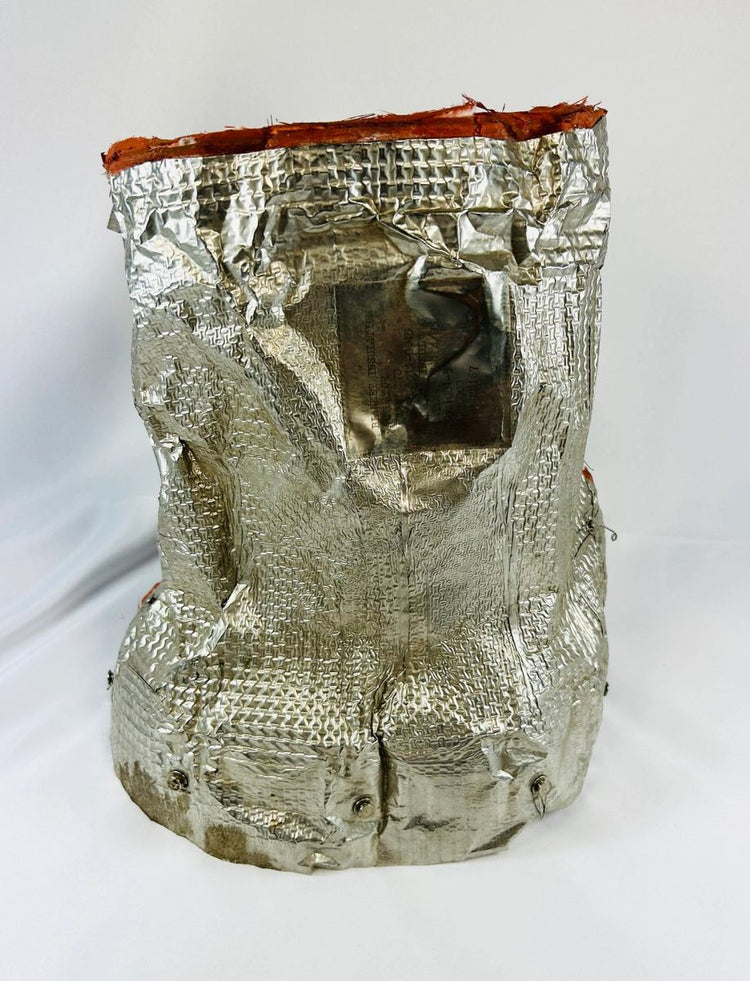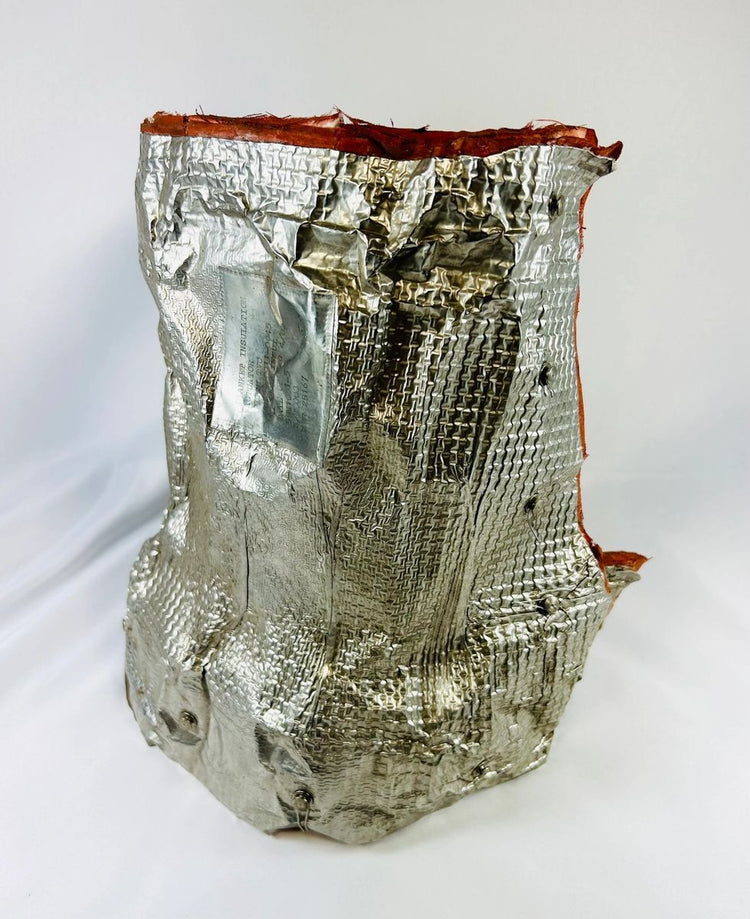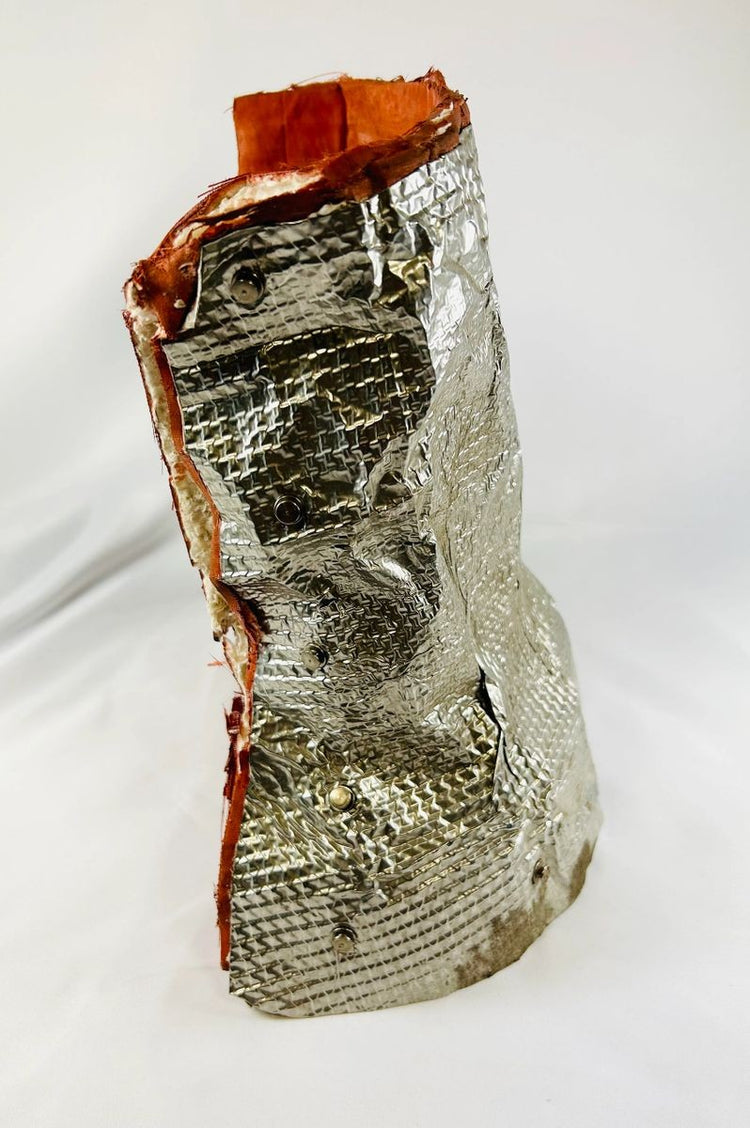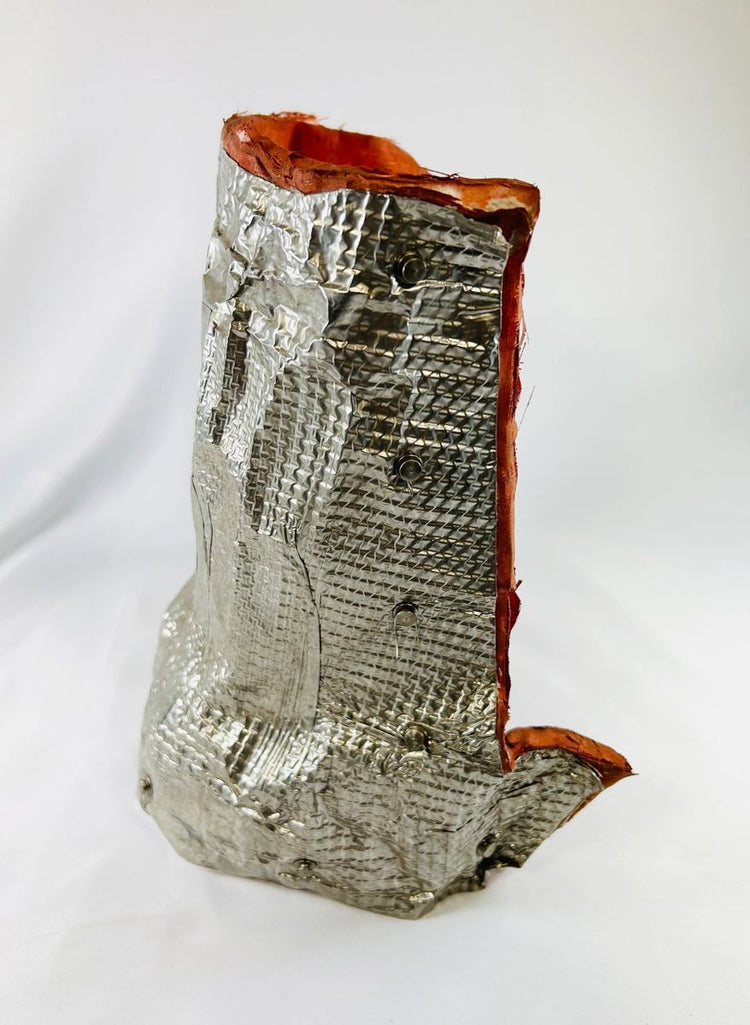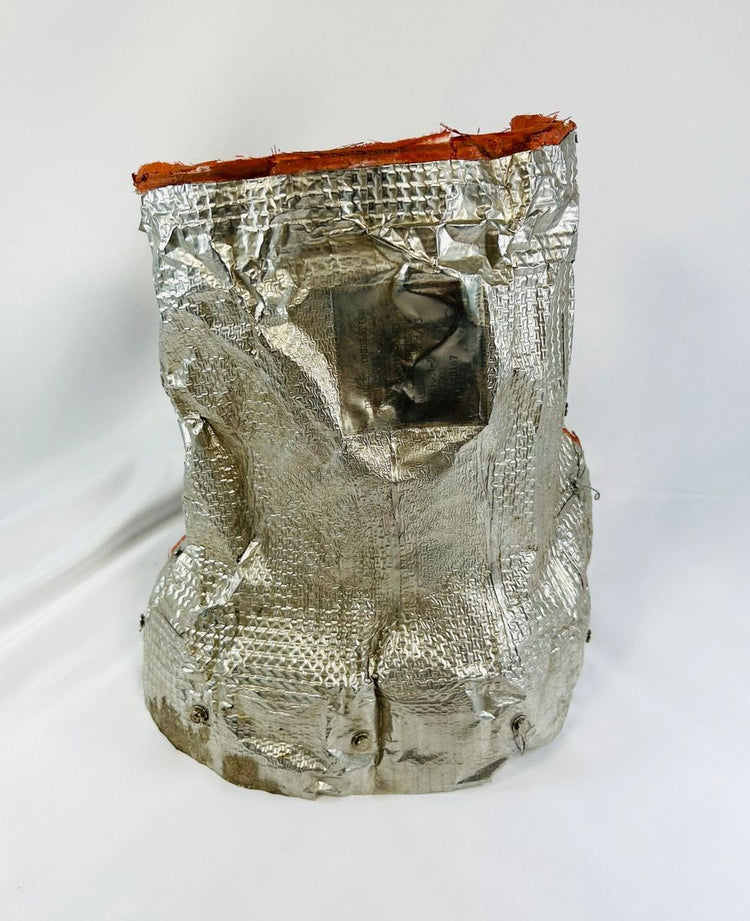Actuador de aislamiento de manta del transbordador espacial de la NASA, tono TVC | 1984
Descripción
Más
Menos
Contexto histórico y origen
Región: Estados Unidos (NASA, Programa del Transbordador Espacial)
Material: Guata de sílice fibrosa (aislamiento de manta)
Periodo: Abril de 1983 (Componente del transbordador volado)
Descripción
Esta rara pieza de manta aislante para transbordadores, que mide aproximadamente 28 x 25 cm, es un artefacto genuino del Programa del Transbordador Espacial de la NASA. Con la fecha de fabricación de abril de 1983, el número de serie S/N 008 y el código de fabricante MFR 25167, representa un componente crucial de la ingeniería del transbordador. Desarrollado originalmente para reemplazar las placas de Aislamiento de Superficie Reutilizable de Baja Temperatura (LRSI), este material de sílice fibroso con textura acolchada proporcionaba una protección térmica avanzada y reducía los requisitos de mantenimiento, lo que lo convertía en una mejora esencial del Sistema de Protección Térmica del transbordador.
Características
- Panel aislante de lanzadera volado auténtico
- Sellado con fecha (abril de 1983), número de serie y código del fabricante.
- Guata de sílice fibrosa acolchada diseñada para una resistencia térmica extrema
- Conexión directa con el patrimonio de vuelos de lanzadera
Importancia cultural
La protección térmica era vital para las misiones del transbordador, especialmente durante el ascenso y el reingreso. Este aislamiento protegía al transbordador de temperaturas atmosféricas y orbitales extremas, lo que reflejaba la innovación de la NASA en materiales aeroespaciales. Estrechamente vinculado al control vectorial de empuje de ascenso (TVC) y otros sistemas críticos para la misión, componentes como este garantizaban la estabilidad, la precisión de la trayectoria y la seguridad de la tripulación. Como parte de uno de los mayores logros de ingeniería de la humanidad, este artefacto no solo es una reliquia tecnológica, sino también un símbolo del ingenio y la ambición de la era del transbordador espacial.
Condición
Bien conservado, con marcas de identificación visibles, acorde con el legado de transbordadores volados.
Dimensiones (aproximadas)
Altura: 11 pulgadas
Ancho: 10 pulgadas
Edad
Abril de 1983 (Componente del transbordador volado)
Descripción
Contexto histórico y origen
Región: Estados Unidos (NASA, Programa del Transbordador Espacial)
Material: Guata de sílice fibrosa (aislamiento de manta)
Periodo: Abril de 1983 (Componente del transbordador volado)
Descripción
Esta rara pieza de manta aislante para transbordadores, que mide aproximadamente 28 x 25 cm, es un artefacto genuino del Programa del Transbordador Espacial de la NASA. Con la fecha de fabricación de abril de 1983, el número de serie S/N 008 y el código de fabricante MFR 25167, representa un componente crucial de la ingeniería del transbordador. Desarrollado originalmente para reemplazar las placas de Aislamiento de Superficie Reutilizable de Baja Temperatura (LRSI), este material de sílice fibroso con textura acolchada proporcionaba una protección térmica avanzada y reducía los requisitos de mantenimiento, lo que lo convertía en una mejora esencial del Sistema de Protección Térmica del transbordador.
Características
- Panel aislante de lanzadera volado auténtico
- Sellado con fecha (abril de 1983), número de serie y código del fabricante.
- Guata de sílice fibrosa acolchada diseñada para una resistencia térmica extrema
- Conexión directa con el patrimonio de vuelos de lanzadera
Importancia cultural
La protección térmica era vital para las misiones del transbordador, especialmente durante el ascenso y el reingreso. Este aislamiento protegía al transbordador de temperaturas atmosféricas y orbitales extremas, lo que reflejaba la innovación de la NASA en materiales aeroespaciales. Estrechamente vinculado al control vectorial de empuje de ascenso (TVC) y otros sistemas críticos para la misión, componentes como este garantizaban la estabilidad, la precisión de la trayectoria y la seguridad de la tripulación. Como parte de uno de los mayores logros de ingeniería de la humanidad, este artefacto no solo es una reliquia tecnológica, sino también un símbolo del ingenio y la ambición de la era del transbordador espacial.
Condición
Bien conservado, con marcas de identificación visibles, acorde con el legado de transbordadores volados.
Dimensiones (aproximadas)
Altura: 11 pulgadas
Ancho: 10 pulgadas
Edad
Abril de 1983 (Componente del transbordador volado)
También te puede interesar

























